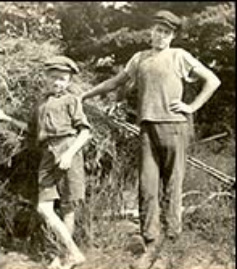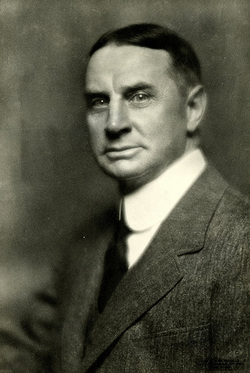Biographical Sketches
Gideon Tirrell and Seth Eames
In 1802 the descendants or successors of Sir William Maynes sent Gideon Tirrell and Seth Eames to explore and run out into lots the unsettled land of Maynesboro, New Hampshire. Each lot contained one hundred acres more or less. These two men started at the northeast end, running the lines east to west, one hundred and sixty rods apart. All seemed to be going well until one afternoon. Seth was busy marking a corner when he heard someone chopping, and on going a little way found Gideon making a corner, and on comparing notes found Gideon had taken the wrong point of the compass, but had marked the corners all along the line. What was to do next, said Gideon, “never mind, it will look just as good as well on paper, for we can draw the lines straight on the plan besides there will never be anyone here, no one will ever know a thing about it.” Little did they think that in a little bit over a hundred years later, Berlin would be the thriving city that trees built.
Amos Peabody and John Messer
In 1820 or 1821 Amos Peabody and his brother-in-law, John Messer, came here from Shelburne on a hunting trip. One thing they noticed was the huge elm trees. They came back here in the winter and began cutting and rolling the logs together, collecting the ashes and leeching them. These two men either spotted or cut out the first trail to the area now know as Berlin. The trail lead them from Shelburne to Success and over to the Maynesboro Industrial Park. That is where the first camp made for hunting and trapping was built, most likely by these two men. Amos Peabody first lived in Gilead, Maine but moved to Coos County and settled in Randolph. He built a log cabin and barn on lot 1, range 6 before the year 1800. The barn was never fully complete and blew down shortly after. Mr. Peabody moved to Shelburne and settled on Peabody brook. He soon married Nancy Messer, the sister of John, and had children some of which names include Aaron, Nancy, Allan, Enoch, Oliver, and Stephen. Mr. Peabody and his son, Oliver, was two of the first carpenters in Shelburne. Another interesting thing about Amos was that in 1820 he found galena on Great brook, later called lead-mine brook. John Messer was the son of Stephen Messer and Anna Barker, one of the original families that settled in what is now Gorham. John was like his father, who was very good with his hands and could make some of the finest baskets, snow-shoes, or moose-sleds. In 1823, John Messer lived with the families of Lowell Bean, Elijah Griffin, and two others which last names are Benjamin and Abiathar. They all lived for a short time in one log cabin in Success.
The Green Family

Daniel Green (Image from Poof Tardiff)
Thomas Green Jr. and his two sons, Amos and Daniel, built the first road passable for an ox team in the year 1826. This road started in what is now called Gorham and ended where the Heritage Park is today. Thomas Green Jr. was born on February 12, 1783 in Massachusetts and came to Berlin with his wife, Lydia Fairbanks Evans Green (born February 3, 1785) ,and their six children, Alpha, Amos, Daniel, Edmund, Aaron, Lydia. The most famous of their children was Daniel (born December 19, 1808.) Daniel Green built many sawmills and businesses throughout the Berlin area. Daniel owned most of “Post Office Square.” He once drained Dead River pond near, the modern High School, to plant cranberries. The cranberry business in Berlin never worked out because they did not have time to ripe. Daniel’s son, Francis, was the first person in Berlin to die in the Civil War. The Greens will be remembered for many things like when Thomas Green Jr. in the year 1835 brought the first cooking stove into town. Many things are named after this family like Green Street, Green Square (also known as Post Office Square), and Green’s Pond.
Timothy (Harden) Hutchinson

(Image from the book “History of Coos County, New Hampshire")
Timothy H. Hutchinson Jr. was born to Timothy Hutchinson and Nizaulla Rawson in Sangerville, Maine on March 5, 1810. He claimed to trace his ancestry to the year 1282 A.D. when Barnard Hutchinson lived in Cowlan, York, England. In 1833, Mr. Hutchinson came to Coos County and worked in a mill in Shelburne. In the year 1846, Timothy H. Hutchinson, or as he was more familiarly known, Harden Hutchinson came to Berlin. He had intentions of building a sawmill and clapboard machine on what was then called "Pine Island rips". He built a curious mill, which is also called a “crooked mill”. The people of Berlin called this mill “Harden Hutchinson’s Crooked Mill” because they said he would take any crooked stick, timber, or root of a tree to build this mill. This mill contained a “up-and-down saw” which tradition says “went up today and down tomorrow.” It is also said it went up, up, up, up until one would think it would never come down, then it went down, down, down, down, never to return, but it is said, all things come about if you wait long enough. Mr. Hutchinson would have no problem waiting because it is said he always did things as slow as possible. Everyone thought Mr. Hutchinson was crazy for putting a sawmill on the spot that he did, but he must have been the smartest of them all because Mr. Hutchinson's mill was located a short ways up the river from where the H. Winslow and Company built their sawmill. His mill was on the outlit of Bean Brook, the brook which is just below the Veteran Memorial Bridge (Twelfth Steet Bridge) and north of Horne field. Mr. Hutchinson was outraged because he claimed that the H. Winslow and Company's mill was on his land and talked of sewing. They told him to name his price and it is thought he said six thousand dollars. In March 1856, Mr. Hutchinson purchased a place in Gorham, put up a house, and December 22d of the same year, he married Eliza A., daughter of James and Betsey Hazelton, of Orford, New Hampshire. In the book, "History of Coös County, New Hampshire" by George Drew Merrill published in 1888, it says; T.H. Hutchinson says that on his first visit to the site of Gorham village in 1835 it was a desolate place enough. The snow drifted so hard that he could scarcely see the marks made by his horse, while the dry wire-grass wriggled above the snow, and the rocks stuck up very plentifully over the ground, and he would not have believed at the time that all the powers on earth could have made him come there to settle. Had he been a painter, surely he would have had abundant materials with which to make a picture of desolation. Suggesting that Mr. Hutchinson was alive when the book was written. (Image from Beyond Brown Paper archives)
"Our Prima Donna"
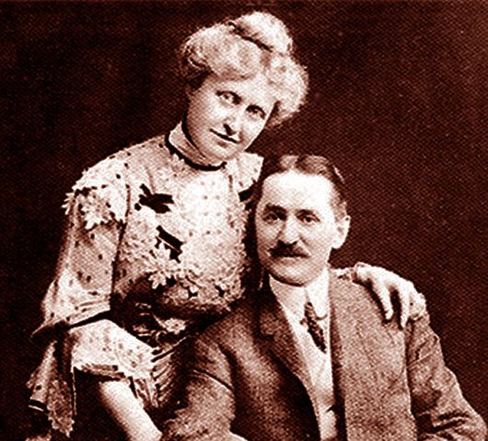
Phila May Miller and her husband, Louis, c. 1890
Phila May (Griffin) Miller was born around 1864 to Charles H. and Charlotte D. Griffin in Dummer, New Hampshire. She was named after her father’s mother, Phila May Peabody. As a child, Phila, also called the “Songbird of Milan”, grew up on the old Henry Holt homestead. Phila had her first lessons in music by Jesse Tuttle of Berlin, a Civil War veteran who was the postmaster at that time. Her first public appearance was a concert in the church in Milan when she was just six years old. At the age of 16, Phila went to Boston, Mass. to continue her studies under the supervision of John O’Neal.
It is in Boston where she met and married her husband, Louis Miller, on November 24, 1886. My research shows that Louis was born around 1858 to Gustavis A. and Caroline F. Miller, both were originally from Germany. Phila traveled many places some of which include Boston, New York, Philadelphia, Baltimore, Chicago, Cincinnati, Denver, Salt Lake City, San Francisco, and Minneapolis, which is where, during the mid-1880’s, she was placed in a program with the famous Madame Nevada as a soloist and she also engaged as leading support to Madame Camilla Urso, the worlds famous violinist at the time.
By the end of the 1880’s, Mrs. Miller was becoming famous. Here in Berlin, she performed at places like the the Clement Opera House on Main Street and the Music Hall on Mechanic Street. In 1895, Phila formed her own opera company and she went abroad and sang successfully in Germany, appearing in Hamburg, Dresden, Berlin and Leipzig. Many more great things can be said about this famous North Country gal, but it is all too much to put into words. These photos were originally uploaded to Flickr by user JFGryphon (Jim Griffin) (Click Here).
It is in Boston where she met and married her husband, Louis Miller, on November 24, 1886. My research shows that Louis was born around 1858 to Gustavis A. and Caroline F. Miller, both were originally from Germany. Phila traveled many places some of which include Boston, New York, Philadelphia, Baltimore, Chicago, Cincinnati, Denver, Salt Lake City, San Francisco, and Minneapolis, which is where, during the mid-1880’s, she was placed in a program with the famous Madame Nevada as a soloist and she also engaged as leading support to Madame Camilla Urso, the worlds famous violinist at the time.
By the end of the 1880’s, Mrs. Miller was becoming famous. Here in Berlin, she performed at places like the the Clement Opera House on Main Street and the Music Hall on Mechanic Street. In 1895, Phila formed her own opera company and she went abroad and sang successfully in Germany, appearing in Hamburg, Dresden, Berlin and Leipzig. Many more great things can be said about this famous North Country gal, but it is all too much to put into words. These photos were originally uploaded to Flickr by user JFGryphon (Jim Griffin) (Click Here).
Bailey K. Davis
Bailey K. Davis was born on April 23, 1826 to Daniel Davis and Hannah Walker in Shelburne NH. Bailey came to Maynesboro (Berlin) when he was very young and his father built a log house on the Berlin-Milan road. Mr. Davis married Susan E. Burbank of Gorham on May 30, 1847 and they moved to a farm on Gorham Hill called the Hodgdon farm. They lived there for about four years then moved back to the Milan Road. Bailey than moved into a house that he built on Main Street which was somewhere around the old fire station and where Brown School is today.
Mr. Davis supported his family by working as a carpenter and mill hand in the H. Winslow & Company sawmill. After living there for five years, Davis moved his family to Maine where he lived for some time. While in Maine, two out of three of Davis’s children died of tuberculosis. In 1884, Mr. Davis moved back to the house on Seventh and Eighth Streets in Berlin, that is where he wrote his articles that were published in the Berlin Independent, which was later put into book form by his granddaughter in the 1920's. This book is known as Traditions and Recollections of Berlin N.H. with the first article being published in 1897. Mr. Davis also got involved with politics and helped encourage the building of the first Berlin High School on School Street. Sadly Mr. Davis died on May 7, 1904. Back in 1926, Mr. Louville Paine had this to say about Mr. Davis:
Mr. Davis supported his family by working as a carpenter and mill hand in the H. Winslow & Company sawmill. After living there for five years, Davis moved his family to Maine where he lived for some time. While in Maine, two out of three of Davis’s children died of tuberculosis. In 1884, Mr. Davis moved back to the house on Seventh and Eighth Streets in Berlin, that is where he wrote his articles that were published in the Berlin Independent, which was later put into book form by his granddaughter in the 1920's. This book is known as Traditions and Recollections of Berlin N.H. with the first article being published in 1897. Mr. Davis also got involved with politics and helped encourage the building of the first Berlin High School on School Street. Sadly Mr. Davis died on May 7, 1904. Back in 1926, Mr. Louville Paine had this to say about Mr. Davis:
"The late Bailey K. Davis was a natural born orator. He had the faculty of
interesting his audience. His written word also was entertaining. If he had had
the educational advantages of the youth of today perhaps it might have been his,
"The applause of listening senates to command." He wrote a history of early
Berlin, an admirable work, and it was published in the Berlin "Independent." I
hear now that his grand-daughter is having it published in book form. Mr. Davis
at one time was an Advent preacher."
Samuel Eaton Paine

Samuel Paine
Samuel E. Paine was born on September 14, 1837 in Maine to Henry and Eliza (Parker) Paine. When Samuel first moved to New Hampshire he lived in Milan but soon moved to Berlin and bought Joseph Wheeler’s old farm. Samuel owned all of the land behind his farm (Costello’s tire shop today.) Many things are named after Mr. Paine for example, Paine’s Hill (Sherry Street), Paine’s Brook (the brook on top of Twelfth Street), and Paine’s Pasture. Honorable Samuel E. Paine died in Berlin on May 14 of 1908. (Image from Beyond Brown Paper archives)
Louville Paine

Louville Paine, one of Berlin's great historians
Louville Paine was born in Milan N.H. on February 6, 1863 and came to Berlin with his parents, Gardner C. Paine (Born 1834) and Susie M. Brackett (Born 1841). His father, Gardner, established a partnership with Dexter Wheeler and created the first great country store in Berlin. Mr. Paine eventually bought out Mr. Wheeler in later years. After graduating from Bridgton Academy, Louville came back to Berlin to assist his father in the store business. By the time Louville was twenty-five, his father passed away and the business was changed to L.B. Paine and Company. Louville latter worked at the Burgess Sulphite Fibre Company as a pulp tester. Mr. Paine was also a great historian of Berlin and wrote in the Brown Bulletins of the late 1920’s. Louville's uncle is pictured above. Sadly Mr. Paine died at his home on 306 Church Street on February 4, 1931. (Image from Poof Tardiff)
Bob Whitcher
Bob Whitcher was born on April 29, 1917 in Berlin. He later became a Major League baseball pitcher. Mr. Whitcher died on May 8, 1997.
Michael J. Durant

Michael Durant (Image from Wikipedia)
Michael J. Durant (born July 23, 1961) is an American pilot and author who was held prisoner after a raid in Mogadishu. He was a member of the 160th Special Operations Aviation Regiment (Night Stalkers) as a Chief Warrant Officer 3. He retired from the Army as a Chief Warrant Officer 4 Blackhawk helicopter Master Aviator in the 160th SOAR after participating in combat operations Prime Chance, Just Cause, Desert Storm, and Gothic Serpent. His awards include the Distinguished Service Medal, Distinguished Flying Cross with Oak Leaf Cluster, Bronze Star with Valor Device, Purple Heart, Meritorious Service Medal, three Air Medals, POW Medal, and numerous others. He and his wife, Lisa, have six children.
Alf Halverson
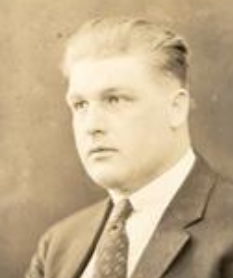
Alf Halverson
Alf Halverson was born on August 8, 1899 in Berlin and died in March of 1973. He will be remembered for many great things. He was the leader of the National Youth Administration in Berlin. He supervised many things such as the building of the NYA Trade School and the Berlin Mills Pool. He also was one of the pioneers of skiing in the north east. He helped found the US Eastern Amateur Ski Association (USEASA) in 1922 and worked hard to strengthen the association by creating a network of ski clubs. He was a supporter of junior skiing and helped found the first junior ski club in 1926. He lived on Twelfth Street, which was not to far from the Berlin Mills Pool. Two streets in Berlin are named after his children Brett Street and Sherry Street. He and his family sure did leave their mark on Berlin’s History.
Earl Silas Tupper

Earl Tupper (Image from Wikipedia)
Earl Silas Tupper was born on July 28, 1907 on a farm located on top of Cates Hill in Berlin. His family stayed on this from for about three years before moving to Massachusetts. He started a landscaping and nursery business after studying at Bryant University, which was then called Bryant & Stratton University. In the Great Depression, he was forced into bankruptcy. He then was employed by DuPont Chemical Company, where he was supplied with inflexible pieces of polyethylene slag. Tupper purified the slag and molded it to make a lightweight, non-breakable cups, bowls, and plates. He named his invention Tupperware, after himself, and started the Tupperware Plastics Company in 1936 and introduced Tupperware Plastics to hardware and department stores in 1946. Tupper unfortunately died on October 5, 1983 in Cost Rica.
William Wentworth Brown

William Wentworth Brown (Image from Poof Tardiff)
William Wentworth Brown purchased stock the Berlin Mills Company in the year 1868. At that time the company consisted of a small sawmill where the Northern Forest Heritage park is today, The Berlin Mills Company Boarding House which is today’s Brown Company House, and the Berlin Mills Company Store. This small sawmill soon grow larger than anyone thought it would become. By World War I, the Company changed its name to the Brown Company because the Brown family owned most of the stocks to this company. The Browns did a lot for this city and helped many people. The Brown family is now known as “Berlin’s Royal Family”.
W.W. Brown was so generous, he let his horse, "Doctor", be driven from Berlin Mills down to Berlin Falls to carry mail.
W.W. Brown was so generous, he let his horse, "Doctor", be driven from Berlin Mills down to Berlin Falls to carry mail.
Gershon Bickford
The Berlin Mills Company started selling some of its land near the depot by their mill on the east-side. By this time Mr. Gershon Bickford got involved. He built the first two houses on the east-side to kickoff the settling of that side of town and they were sold right away. Before the Berlin Mills Company sold their land on the east-side, this area was called the “Berlin Mills Addition” and latter as the first two buildings went up the newspaper called this side of town “Cottage City” but today the only nickname of this side of town is the east-side. Mr. Bickford also purchased the Dead River Pond (or Green’s Pond) from the Glen Manufacturing Company. He pulled the damn and drained the water. Mr. Bickford then had a canal dug, which went the length of the pond. The last thing Mr. Bickford did during his “Pond Project” was to make Pleasant Street reach Mechanic Street. This paved the way for many businesses and even a skating rink to move on the spot of the old pond.
Hon. Henry F. Marston
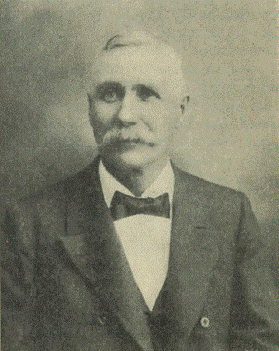
Henry F. Marston was born on July 5, 1837 in Orrington, Maine to William and Lucy (Higgins) Marston. In his early life, he worked in the woods and, for 11 months, served in the Union Army in the Twentieth Maine regiment during the Civil War, being wounded in the battle of Irish Bend and soon after discharged. He then worked for the Berlin Mills Company for nine years and soon after built and operated the Cascade House and soon after built the Berlin House. In 1858, Marston married Mary J. McGrown of Ellsworth and had one son, Harry. He served as selectman, town treasurer, and county commissioner for two terms. When Berlin became a city, he became the first mayor. Marston was a Free Mason, Odd Fellow, and a member of the Grand Army of the Republic (G.A.R.). He was a liberal supporter of the Universalist Church in Berlin and an active Democrat. Marston died on March 16, 1906 at his home in Berlin.
Samuel and Benjamin Thompson
Samuel S. Thompson (born on September 19, 1773), an old Revolutionary war solider, and his son Benjamin (born on August 1, 1803) came to Maynesboro in 1827 and bought the house of William Sessions. Samuel was a great carpenter and he even painted the old ballot and jury boxes used in Berlin when it was incorporated in 1829. He also built the first school-house at the bottom of today’s Cates Hill.
Dexter Wheeler

Dexter Wheeler came to Berlin sometimes around 1826
Dexter Wheeler was born on April 27, 1816 in Gilead, Maine to Thomas Wheeler and Sally Blodgett and came to Maynesboro (Berlin) with his parents when he was about ten years old. When Dexter became of age, he found employment in Keene and Swanzey, where he labored on the farm in the summer and taught school in the winter. With his earnings he was able to educate himself at Parsonfield, Maine. When Mr. Wheeler returned to Berlin, he found employment in the mill as sawyer. In those days, Mr. Wheeler made only $6.00 to $10.00 per month. He saved up as much as he could, spending as little as possible, he purchased the Amos Green Mill-site, an old clapboard mill at the “Falls”. Mr. Wheeler married Elizabeth F. Hodgdon which was the eldest daughter of Moses Hodgdon, one of the founding fathers of Milan, in December of 1847. Wheeler owned and operated the Amos Green Mill until 1851, when he became a station agent at Berlin Falls. In 1869 he went into business with Gardner C. Paine and formed the well-known firm, Wheeler & Paine. At the time of his death on February 7, 1881, Mr. Wheeler was surrounded by his only child, Sarah, and her husband Eugene W. Scribner and their children. Mr. Wheeler was also town treasurer, a selectman, and during the years 1842 and 1846, he was town clerk. Dexter Wheeler was also the brother of Cyrus Wheeler and the nephew of William Sessions. (Image from Poof Tardiff)
Reuben Hobart Wheeler

Reuben Wheeler, the brother of Cyrus and Dexter Wheeler
Reuben H. Wheeler was the sixth child of Thomas Wheeler and Sally Blodgett and was also the brother of Dexter and Cyrus Wheeler. He was born on April 20, 1819 in Gilead, Maine and came here around the time Thomas, his father, built his house in Maynesboro (Berlin) in the year 1826. Reuben married on April 23, 1844 to Daphne Chandler, which is the daughter of Hazen Chandler and Betsey Lary who are among Maynesboro’s (Berlin’s) first settlers. They had three children, one of them was named Viola and she married John W. Greenlaw and they lived on Riverside Drive on the bottom of Cates Hill Road. Reuben is one of the most famous log drivers Berlin has ever seen. He worked in the lumber industry in many parts of the country. In the year 1869, Mr. Wheeler was the so called “master workman” of the first log drive that went down the Connecticut River. He was also the owner of an orange grove in Deland, Florida. Mr. Wheeler served as selectman for some years. Sadly Mr. Wheeler met the same fate that we all will met some day and died on April 7, 1879 after an illness. (Image from Poof Tardiff)
Zeruah (Blodgett) Wheeler

Mrs. Cyrus Wheeler (Image from Poof Tardiff)
Zeruah H. (Blodgett) Wheeler was born on January 23, 1828 in Maynesboro (Berlin) to Samuel Blodgett and Rebecca Bean. Her father was the first to harness the maple syrup business on top of what was then called Blodgett Hill after this family. Today we call Blodgett Hill another name after Andrew Cates and family, hence the name Cates Hill. She was born in the Blodgett family home on Cates Hill road and was also the second child to be born in Berlin (the first being her brother Dexter Blodgett). She married the man who helped build the first home in Maynesboro (Berlin), Cyrus Wheeler. Mrs. Wheeler died on July 1, 1910.
Caroline (Gordon) Brown

Caroline Gordon Brown, daughter of Confederate General John Gordon
Caroline Gordon Brown was born in Georgia in 1873 to John B. Gordon and his wife, Fanny. Mrs. Brown’s father, John, was a high-ranking general in the Confederate Army, being right below Robert E. Lee. Caroline married Orton Bishop Brown, the son of William Wentworth Brown. They lived in there grand home on Church Street, getting occasionally visits from Mr. John Gordon himself. On one of Mr. Gordon’s visits to Berlin, he spoke to a large crowed in the Clement Opera House on Main Street about his days in the Confederacy. Caroline and Orton had several children including Wentworth, E. Lewis, and Gordon. (Image from Poof Tardiff)
|
|
|


